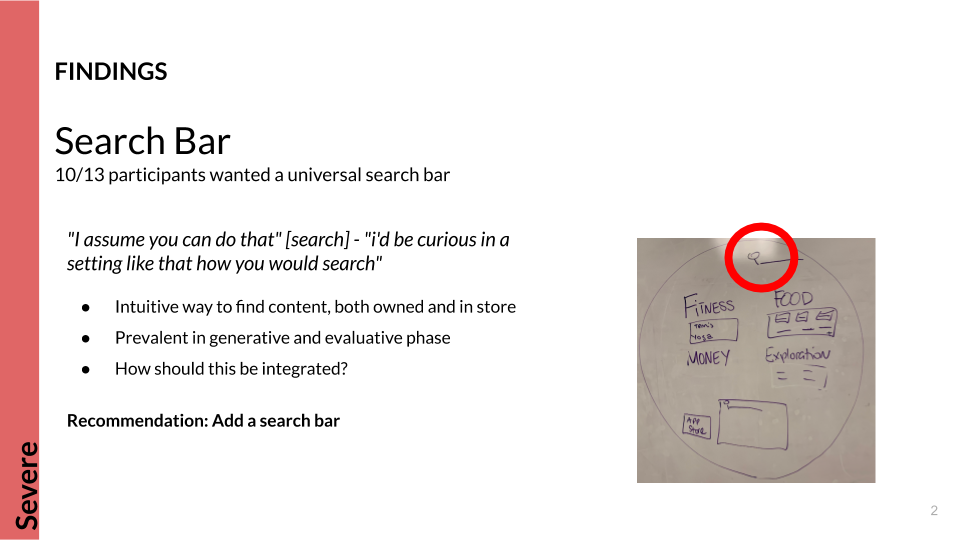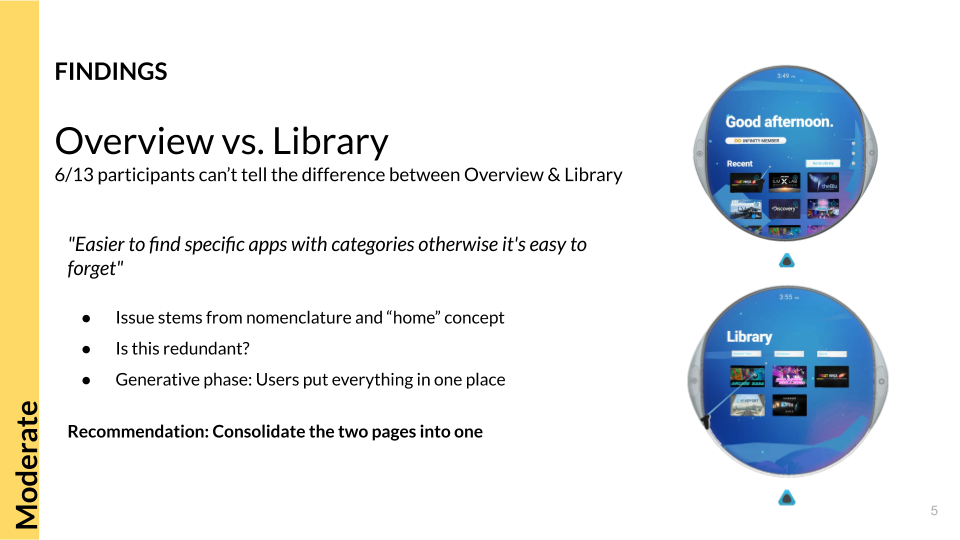HTC VIVE COSMOS HEADSET
Lens Usability Research
Duration
Jan - March 2020
At a glance
I Designed a generative and evaluative research study for the HTC Cosmos system launcher and generated 15 findings and recommendations.
Group Members
4 UX Researchers including me, one Senior UX researcher and one PM.
My Role
UX Researcher
Objective
To understand users’ expectations, perceptions, and experiences of the VIVE Cosmos ‘Lens’, the application launcher in HTC’s Virtual Reality (VR) system, in order to generate recommendations for improvement.
The lens
The Lens consists of three screens: Overview, Library and Viveport, and allows users to view and launch their own apps and browse recommended apps. HTC hopes to use these research insights to guide future iterations of the Lens, making it easier to understand and use.
Primary Research Questions
How do participants define what a system launcher should be?
What is the best way for HTC to communicate the metaphor of the Lens?
In what context (when and why) would participants interact with different sections of the Lens?
What do users understand & expect from each section of the Lens?
How do users interact with the Lens?
Study Methods
STUDY DESIGN & PROCEDURE
Target Participants
I recruited a total of 13 participants (6 male, 7 female), As a minimum viable characteristic metric, all participants had to be familiar with and/or use technology and falling in one of these two categories shown below.
Additionally, We also had several exclusion criteria like using Vive Cosmos before or being an expert in VR systems, such as creators, developers, daily users, etc.
Test Environment and Setup
Testing sessions were conducted in two research labs at the HTC Seattle office. Our usability study lab consisted of the following:
Viveport Cosmos VR Headset and Controllers
Camera Recorder
PC connected to the headset
Screen Recorder - Windows 10 Game Bar
Whiteboard and Whiteboard Markers
Sticky Notes
Affinity Diagram & Data Analysis
All the raw data, images, and video recordings were analyzed using Miro software to code for thematic analysis. I organized results around 6 higher level themes: Context, Content, Navigation, User Interface, and Impressions.
Within each higher level theme, sub-themes emerged: Overview vs. library, Viveport confusion, Origin, Void space, Settings, Filters, Recommendations, Return to origin, Direct access to Viveport, Customization, Search bar, Folders/categories, Interactions, Hover menu, and preview of content.
To organize and explore the relationships between sub-themes, we created mind maps that visually organize the main theme and disseminate it into its sub-themes and supporting evidence.
Findings and Recommendations
15 unique findings were identified and the five main findings with their recommendations are are presented down below
Implications and limitations
Participants recruitment
most of our users were under the age of 34.
VR Immersiveness
Users’ ability to verbalize their mental processes while simultaneously focusing on completing the immersive VR tasks.
Data consistency
Data gathering was limited by variable test moderator prompting, interaction styles, and variable note-taking skills.
Logistical complications
Limitation to run the studies in the HTC office with low-quality session recordings which slowed our process of data analysis.
Lessons and Reflections
Knowing what to prioritize is the key to keep us organized and efficient
In such a short time frame, we went through a challenging process to scope our study and focus on evaluating the most important aspect of the VR headset - To move forward fast, I had to see the big picture and remind myself to embrace ambiguity along the way.
Pilot test, Pilot test, Pilot test
Running a dry run close to the day of the session allowed me to test the logistics, validate that all the tasks can be performed, and to run out any possible issues.
Moderating a usability session is an art
I learned as a moderator that you have to juggle between many things and excel at them, to remind participants to think aloud and to externalize their thoughts and feelings, to not lead and introduce bias, to ask propping and follow-up questions.







